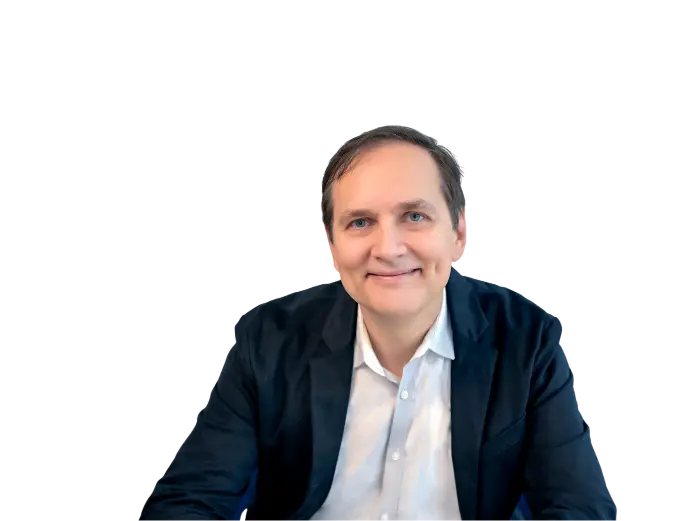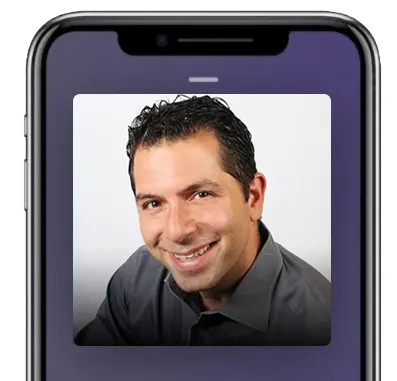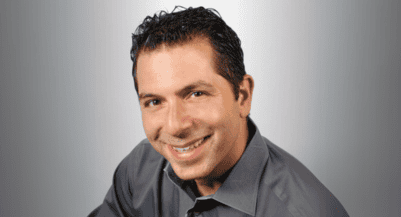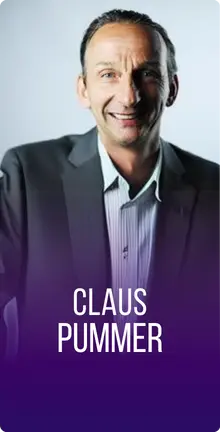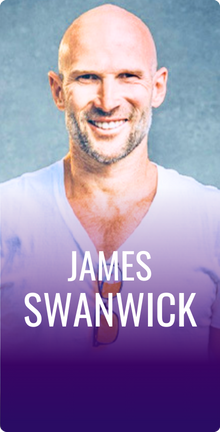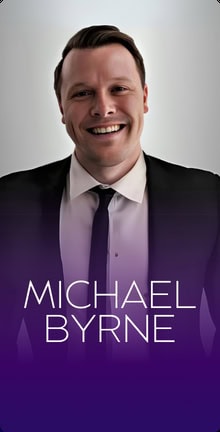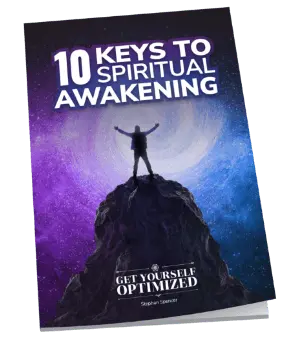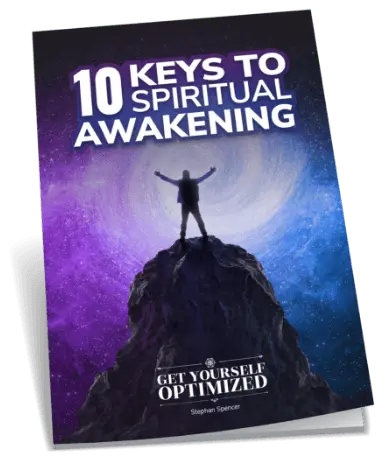In this Episode
- [02:38]Dr. Peter Martone shares his personal journey from debilitating back pain to discovering the key to optimal sleep.
- [07:59]Learn how your subconscious brain’s need for safety and body alignment impacts your sleep quality.
- [09:23]Dr. Martone outlines steps to reprogram your sleep position, showing how to create a safe, aligned sleeping environment.
- [15:37]Dr. Martone shares essential sleep hygiene practices, debunking myths around room temperature and lights and revealing a surprisingly simple yet effective bedtime routine.
- [18:21]Explore minimalist biohacking tools that reduce reliance on technology, emphasizing natural sleep enhancers that Dr. Martone personally endorses.
- [25:13]Stephan and Dr. Martone dive into heart rate variability (HRV) and explain why aligning your cervical spine can dramatically boost your HRV scores.
- [29:34]Dr. Martone reveals the survival vs. thrive system to revolutionize your approach to health and sleep.
- [32:11]Dr. Martone introduces the W.A.Y. Better Sleep System and the story of the Neck Nest pillow.
- [37:20]Dr. Martone discusses why most people toss and turn 20-40 times a night, challenging common beliefs about sleep comfort and highlighting the importance of spinal positioning.
- [40:30]Learn about seasonal changes in sleep routines and optimizing your schedule according to the circadian rhythm.
- [43:20]Final steps to start optimizing your sleep, including how to join Dr. Martone’s free four-day sleep challenge and access his wealth of expertise.
Dr. Martone, it’s so great to have you on the show.
Thank you. I love it. Get Yourself Optimized, right? That’s optimizing your time in bed to be able to get more performance out of the day. We are so aligned. I love it.
Yeah. Well, let’s talk about how you got specialized in the area of sleep. You got trained as a chiropractor. Was there some sort of epiphany, dark night of the soul, or something that brought you to this area of focus?
I didn’t enter the sleep industry to help people sleep; I entered it to help them fix their structure while they were in bed.
What gives us a unique perspective is that I’m an exercise physiologist, kinesiologist and chiropractor. I really geek out about the study of biomechanics and the function of the human body. I didn’t enter the sleep industry to help people sleep. I entered the sleep industry to help them fix their structure while they were in bed. What actually ended up happening about 15 years ago, even as a chiropractor, is I had back pain every day of my life.
I attributed it to being a mountain biker, a rock climber, or just being hard on my body justifying it. It wasn’t until I herniated my own disc that I found myself in the emergency room, hooked up, undiluted with intense pain, not knowing if I was ever going to practice again or bike again, that I really started to think differently.
I reviewed 3000 x-rays and found a pattern due to having—which I did—loss of cervical curve in my neck from my sleeping position. At the time, I slept curled up in a ball on my side, and my body posture adjusted to the head position. As my head started coming forward, it took the dural pressure off of the lower back by constricting a specific muscle called your psoas, a major muscle. The psoas is the only muscle in the human body that attaches directly to a disc.
By reacting to my forward head posture, I had weakened my discs. I started rolling towels under my neck, thinking, “When can I fix this?” I just figured the body is like clay; it can be remolded. Based on Davis’s law, I should be able to do it at night when potentially I live one-third of my life doing nothing, so I could do it while I slept. As I started getting my neck back after countless sleepless nights trying to get used to this new positioning, I transformed this arch of my neck.
Our body repairs during deep sleep, while the brain repairs during REM sleep.
I started sleeping deeper and better, and I’ve never had back pain since. I entered the industry as a structural sleep specialist rather than the normal way to come in. Once I started changing how my patients slept, I started seeing all the health benefits of realigning their spines at night, reversing the damaging effects of modern-day lifestyles.
That’s cool. How many hours of sleep, deep and REM sleep, do you normally get?
Well, last night, because I was a little bit sleep-deprived over the weekend, I got 10 hours of sleep. It’s really difficult for people to get that much sleep. I’m in bed for about eight to nine hours. I focus on getting about eight and a half hours of sleep during the summer and typically a little more during winter. My REM scores depend on what I’m doing that afternoon for exercise.
Depending on how much repair my body needs, I’ll get anywhere between half an hour to an hour and 25 minutes. That’s what I’ll get for deep sleep. My REM sleep usually lasts two hours because the body repairs during deep sleep, and the brain repairs during REM sleep. And because I have that ADD brain, my body requires a lot of REM sleep to stay focused during the day.
How many hours of total REM and deep sleep did you get before you had this breakthrough and you had that loss of cervical curve in your neck?
When you consider the benefits of sleep and its impact on overall health and well-being, you start putting time into it and see the transformation in every aspect of your life.
Well, it wasn’t so much. I never tracked it before then. I just started tracking my sleep within the last 10 years. I was always the type of sleeper that would fall asleep. I’d wake up, and my shoulder would kill me. I’d wake up, and my hip would kill me, or I’d fall asleep in one position, find myself with my covers on the floor, or I’m in a totally different position where I put a pillow between my legs because my hips hurt and my pillow would be on the floor.
I was never a restful sleeper. I never tracked it because I never really put much emphasis on sleep. I thought it was a waste of time, to be frank with you, because when you think about sleep, you’re lying down and doing nothing. And in most people, if they don’t really understand the benefits of sleep, technically, it’s a waste of time. But when you look at the benefits of sleep and the impact that it actually has on your overall health and well-being, you start putting time into it, and you see the transformation that happens in every aspect of your life. That’s when you really start taking sleep seriously.
What are some examples of client or patient successes where they have different kinds of issues besides what you had with the loss of the cervical curve and your neck? Let’s say somebody has hip pain, TMJ, migraines, insomnia, sleep apnea, or they have to use a CPAP machine.
When you’re thinking about each one of those conditions, they’re very different. How somebody needs to sleep is based on something in our program called the Sleep Triumph. At night, there’s a battle going on between your conscious brain—what it thinks it wants. The subconscious brain, what it really wants, because the subconscious brain is in control, and then what the body wants.
Most people think the conscious brain wants to control everything, and it wants to go to bed; it thinks it’s comfortable. That’s what it thinks when, in fact, to fall asleep, the subconscious brain needs to feel safe. Safety is what really allows you to be able to fall asleep. Then, the body wants alignment because the number one reason people will toss and turn is because the body is in pain.
When you’re sleeping on your side, that’s an unstainable position, but it’s safe for the subconscious brain. People need to focus on the way that they fall asleep. They don’t need to focus on the entire night’s sleep. The issues you have going to sleep, whether it’s sleep apnea, your toss and turn, or you’re in pain, and all of these other aspects, you start with the alignment of the spine in mind, putting yourself in the correct sleeping position. Then, you make the subconscious brain feel safe and teach the conscious brain how to get out of its own way.
Your posture is the blueprint of your neurology’s ongoing battle with gravity. Share on XNow, you mentioned that you had many nights of insomnia or whatever because you had to get used to this new sleeping position. Is that common? I’m a side sleeper. I also sleep on my stomach, but I’d say more on my side than on my stomach. I don’t like sleeping on my back. I’m guessing you’ll tell me I need to sleep on my back.
I’m going to tell you you need to start on your back. How you end up staying asleep is up to your subconscious brain. The conscious brain wants to control everything: “This is how I have to do it. It’s not in control.” So, the subconscious brain in the body is in control. If we set the body up in a neutral sleeping position, your weight is distributed over the greatest surface area, which is on your back.
You put a pillow under your neck and do not support your head, allowing the head’s weight to act like a counterweight to lightly distract a curve into the spine. The weight of your head, hanging off the back of a pillow, elicits an improvement in the arch of the cervical curve. Then, you create safety for the subconscious brain when you need pressure. The subconscious brain likes to curl up in balls and put pillows over its head or space against the pillow because it craves safety.

When you sleep on your back, because I was a safety sleeper and didn’t know these principles at that point, I woke up feeling exposed. Tens of thousands of people are either using our product or have gone through our programs. The number one issue is, “I can’t sleep like that.” The answer to that question is you don’t have to. “But when I fall asleep in the position you’re asking me to, I feel like I’m falling off the end of a cliff, or I just feel exposed.”
That’s because the subconscious brain and the body are constricted in this forward plane. You see all these people walking forward, and all this posture is adjusting to that head position that when we fall asleep on our back, it feels like we’re falling backward. People get nightmares and things like that. So now we understand that you can sleep slightly elevated while you’re starting to transform the body into falling asleep in these positions. Then, over a period of time, the body will adapt.
How long does this go for? What kind of results can you expect over what timeframe?
The older somebody is, the tougher it is to change. The more insecure somebody is, the more safety they crave.
The older somebody is, the tougher it is to change. The more insecure somebody is, the more safety they crave. For instance, a cross-dominant individual, which means a person that is, let’s say, right-handed, left-eyed, or they’re ambidextrous, or they have ADD or trauma in their lives, those people are going to have a harder time sleeping opened up.
The more arthritis or degeneration you have in your spine, the more pain somebody’s going to have when they start to transfer into this position, which is like me, I had a lot of discomfort because of my curve and my cervical spine, even though I was getting adjusted it was straight. When I had that straight cervical curve, it hurt when I started bringing my neck back. But I always started.
I know the body responds to what you do ritualistically over a period of time. If I always started in that position, wherever I ended up, I ended up. As long as the lifestyle habit was putting me into this sleeping position, that would potentially, at the time, I thought would correct my spine by maintaining alignment. I’m just going to be as focused as I can about it. Because my why was big enough.
I don’t care about my sleep. I care about my spine and being able to mountain bike again. I started doing it. It took me about three weeks; the average person can get used to it in up to a month. But I have people that are able to fall asleep in that position on day one. I wasn’t able to do it, but it took me some work.
Proper spinal alignment during sleep is the key to unlocking optimal health and rejuvenation. Share on XWhat other things are you focused on with regards to sleep, like sleep hygiene, sleep habits and so forth, that will help our listener beyond adjusting their position as they fall asleep that helps to readjust or correct their cervical curve?
We have to understand that your posture is a representation or a blueprint of your neurology’s battle with gravity. Your posture affects your structure. Your structure affects your nervous system. I can look at people and tell them what’s wrong with them internally with high accuracy. Based on the way you stand, I can tell you what the neurology looks like underneath. How do we fix that structure or posture?
A portion of it is at night when you’re sleeping, you stretch the neck back, and then getting adjusted helps basically take hardened clay and put it in water. It makes the spine more moldable. Then, it’s still up to you to retrain the neurology. We teach our patients to retrain the neurology working on a wobbleboard or balance work. When you work on a wobbleboard, and you’re standing straight up, most people are going to fall backward because they’re all constricted in this forward plane.
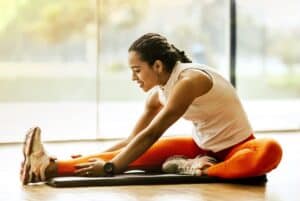
When you’re on a wobble board and look straight up, you will retrain that neurology to keep a more upright position at night. You stretch that neck back while sleeping, then adjust to make the adaptive process easier.
I wanted to ask you about some of the additional sleep practices you recommend or implemented personally in terms of sleep hygiene and the room’s temperature, turning off all kinds of night lights and things like that. What are some of the other things that you would recommend?
We went to a low-light situation at my house right around 7 PM. Try to keep lights to a minimum in the house. As far as a lot of people hem and haw over the room temperature, you’re looking at a body that’s 98.5° in the delta of the room. Whether it’s 68°, 70°, or 71°, that delta isn’t really too big of an issue. If you’re in a colder room, you will have less skin exposure when sleeping. If you’re in a warmer room, you’re going to have more skin exposed. So I use my covers, I stick my hands and my feet out of the covers so that my body can use the hands and the feet as a radiator to cool the core.
Your posture affects your structure. Your structure affects your nervous system.
Ultimately, the issue is cooling the core. How do you cool the core? First, you avoid having food in your system before bed because a byproduct of digestion is heat. You want to slow your respiratory and heart rates. One way to keep those stimulated is not to consume caffeine after noon because caffeine typically stays in your system for a long period of time.
Also, decrease exercise. Don’t do high-intensity exercise within three or four hours of going to bed because it elevates your heart rate. Limit anything that elevates your heart rate, such as exercise stimulants.
You want to decrease your heart and respiratory rates and your body’s core temperature. I also like people to use sleep masks. I either wear a sleep mask, which puts pressure against my head or eyes, or I put a towel over my eyes or a pillow over my forehead. That pressure on my forehead or against my eyes is light pressure. It blocks out the light and creates a safe environment for my body to sleep in.
We have Sleep Crown pillows that cover the top of your head and your eyes. Do you know about this?
Yes, that’s a great product. I love it. It goes right over the head, creating a safe environment while blocking out the light.
It’s like the best of both worlds. You have a sleep mask, and you’ve got something that feels substantial, not just this flimsy thing you get for free on the airplane.
Exactly.
Cool. Are there any kind of devices or biohacking tools you suggest to help with sleep?
I’m a very basic person. I like as little support as possible because sleep is such a natural thing. We were born to sleep. Where it becomes an issue is too much electronics and too much technology. It’s not that we need more technology; we must get rid of it. I love just the lights off and a dark, soothing environment.
Focusing on meditation or prayer during the day when you’re conscious is a great way to teach your body to decrease your temperature, heart rate, and respiratory rate.
A great way to teach your body to decrease the temperature, heart rate, and respiratory rate is during the day when you’re conscious, focus on meditation, prayer, or just close your eyes. I like it outside in nature. You get your skin exposed to the sun and just relax your body.
Every time you do that, use a scent. I don’t care what the scent is. It could be lavender or citrus. The scent doesn’t matter. But every time you relax consciously, you use that scent. And then your subconscious brain, whenever it’s exposed to that scent, will decrease it automatically. You can use that scent and spray it on the pillow, and you can put it under your nose. But what you’re doing is, with work, you’re teaching the subconscious brain to lower its core temperature, its respiratory rate, and its heart rate.
One of my most effective sleep tips is understanding where your thoughts are versus where your memories are and then understanding that your thoughts are typically in the prefrontal cortex, where your executive functioning is, opposite where your sleep centers are. You can’t think yourself to sleep. You need to remember yourself to sleep. If you think about walking on a golf course, “Hole one, hole two. The sand trap was here, the water’s there. Oh, let’s go to hole three,” and you almost do like a flyby drone footage of yourself walking the 18 holes, put yourself to sleep with that memory. Think about that memory every single night when you go to sleep, and you’ll go to sleep quicker and quicker and quicker because you’re focusing on something that your brain will attach to sleep.
Do you recommend listening to guided visualization-type meditations, music, binaural beats, or anything to help you get into a more ready state for sleeping?
I have never needed it. I am working with specific music right now, done on a piano. This specific device uses a particular bass. You can put it on your body. It could be against your leg, arm, or hands, and then it can even be low. It’s just the specific tone against your body. This will stimulate the vasovagal or vagus nerve response, which stimulates the parasympathetic nervous system and helps you sleep.
For optimal rest, align your sleep with nature—aim to go to bed as close to sundown as possible. Share on XI just think it really needs to have a low tone and be rhythmic. You can’t focus on it. I also believe that it needs to shut off at a certain time because that specific stimulation will be able to put you to sleep, but staying asleep as your brain patterns change doesn’t need brainwave stimulation. I just don’t think we have anything smart enough to adapt that with that biofeedback yet.
I have trouble staying asleep past six and a half hours, especially if I go to bed late. I’ll end up waking up early when the sun rises, which is very frustrating, even if I wear a sleep mask. So, what tips do you have for somebody who has trouble staying asleep?
Get back into the same memory you put yourself to sleep on. Self-discipline of the mind is very difficult. Especially when the sun comes up early, whether the sun’s going against your eyes or against your skin, that light in the room stimulates you in some way. In order to put yourself back to sleep, you have to keep that conscious brain shut down and force the body to go back into the subconscious brain or back into that memory.

You’ve got to refocus on either entering a dream, focusing on your breath, or slowing your respiratory rate down. Right now, I’m waking up at five in the morning. I don’t wake up at five in the morning in the wintertime; I do in the summertime. I have to put myself back to sleep to get that extra hour and a half of sleep. It’s just the self-discipline of the mind to be able to do it, refocusing on that memory that you put yourself to sleep. But it’s really difficult if you’re starting to think because if you’re starting to think about your to-do list because it’s a great time to think, you’ll never go back to sleep.
I’m curious about what memory you pick to fall asleep to.
My memory has changed for the last three months. I had a Christmas party, and I’ll still go back to this memory and account everybody at my Christmas party. It was 115 people. I categorize them according to who came with what group when they came. Then, I have my biker friends down in my bike room. Then, I have other friends here. I am just re-categorizing people. I’ll go through it, and I do not worry if I get to the end. If I do, if I don’t, or if I stop thinking, you just have to give in to that.
HRV (Heart Rate Variability) is a balance between the sympathetic and the parasympathetic nervous system.
Now, the next memory. I had one way back about 15 years ago when I was running a bobcat and smoothing the land. It was a surreal thing for me to do that landscaping. For some reason, I go back to running that bobcat. I have different memories that I bounce off of. The most recent one is when I started golfing. I will walk the 18 holes like I know the front nine. I don’t know the last 18. It’s getting a little frustrating for me because I can’t remember them. But as I go through, I have another course that I know really well. I walk myself through that one. So, it’s just these rhythmic old memories that I put myself to sleep with.
Where does HRV fit into the sleep equation? Heart rate variability is a metric that a lot of people are talking about, especially biohackers and functional medicine practitioners.
One of my major focuses on sleep is position. Why is position so important? In the beginning, it was because I wanted to fix my back. But what I found was as people started changing their sleeping position, a specific metric that I had a difficult time within my practice because I’ve been monitoring HRV for almost 20 years now, is that they were good as long as I got them adjusted, but they would keep coming back, and their HRV would be all over the place.
HRV is a balance between the sympathetic and the parasympathetic nervous system. The more sympathetically dominant you are, the lower your HRV readings are. The more parasympathetically stimulated, the better HRV readings are going to be. When you start to arch the neck back and improve that curve, you’re improving the function of the vagus nerve, which stimulates a parasympathetic tone and then balances out HRV readings.
HRV is basically a way to determine how rested your body is. The higher the variability, the more repair you’re getting at night. The lower the variability, the more sympathetic tone you have, and the worse quality of sleep because the HRV is so sympathetic dominant. You’ll notice with low HRV scores, you’re getting less deep sleep. With higher HRV scores, you’re gonna get better deep sleep. HRV is an indication of how relaxed you are at night when you’re sleeping, basically due to what’s called vagus parasympathetic tone.
What’s a good HRV score during the night? Let’s say you wear an OURA Ring. I do. Do you have an OURA ring?
I do. A good HRV score is not comparable to your friend. Take your HRV score or reading. Whether you use an OURA ring, an Apple watch, or a sleep diary, it doesn’t matter what somebody uses as long as you’re consistent with whatever it is that you’re using. Then you write down, “I felt great this day,” or “Oh, I felt horrible this day.” On days that you feel great, strong, and powerful, you look at your HRV reading and then determine that it is your healthy HRV. You want to increase that by 10% to 15%. Do different things to help improve that HRV once you establish your healthy HRV.
What’s your optimal HRV, then?
My optimal HRV is 50. Other people’s optimal HRV is 85. Some are 110. Some are 30. It really depends on where you’re at. If I exercise, I need an HRV of 60 or 65 the next night. But on average, I run between 45 and 50.
What’s the latest you would recommend somebody work out not to have it mess with their sleep quality that night?
It all depends on what you’re working out and how aerobically active you are. It’s the intensity, really. On Tuesday nights, I mountain bike very aggressively, and I never will get a good night’s sleep. My heart rate is too dehydrated. I stop exercising right around 6.30 or 7. Even though I go to bed at 9.30, I’m still shot because my core temperature is going to stay elevated. Now, on a regular night, let’s say, during Friday’s exercise at noon, I had no problem falling asleep that night.
You have to really monitor what’s right for you. If I go to the gym and just work out with weights, I can fall asleep that night, not really having an issue within two hours before going to bed. It’s all about your heart rate. When you close your eyes and slow your breath, if you feel your heart pounding, your respiratory rate will increase because your heart rate is the overriding determining factor of the core temperature.
Your survival systems are the cardiovascular, respiratory, and musculoskeletal systems and your body’s core temperature and metabolism. Your thrive systems are reproduction, the immune system, and digestion.
Now, if you slow your respiratory rate down and your heart rate’s able to come down, that’s the magic formula for you to be able to get good sleep. The problem is there’s just so much information out there, and they’re not looking at the whole big picture. I’m a “why” guy in school. I always ask questions. I came into this industry with this understanding of something that’s called allostatic load. You have these systems that are called survival systems.
Your body’s going to want to survive before it wants to thrive. Your thrive system is your parasympathetic, run by your parasympathetic nervous system. Your survival systems are run by your sympathetic nervous system. Your survival systems are cardiovascular, respiratory, musculoskeletal system, body core temperature, and metabolism. Your thrive systems are reproduction, immune system, and digestion. You can’t survive and thrive at the same time. Now, when we look at allostatic load, the body wants to survive before it wants to thrive.
That’s it. It’s going to run you from a tiger before you’re going to be able to eat a sandwich. When you look at that balance, there’s so much dysfunction in the recommendations people give—not understanding how the body does this. They’re giving blanket statements, not realizing how the body’s physiology actually functions. And yes, you need brainwave patterns to come down. You need all this. But what’s the underlying reason why they don’t? A lot of times, people detoxify too late at night. They’re eaten too late. We give that recommendation. But if you can’t shut off your brain, you’ll elevate those core temperatures anyway.
You have a course or a program that you take your clients through that helps them rejuvenate their sleep and improve their position and, thus, the cervical curve in their neck. What does the course look like? How long is it? I think you have a pillow that helps people as well. Can you walk us through your solution?
Distraction is a stress that causes change.
Our solution is called the W.A.Y. Better Sleep System. W.A.Y. stands for awakening the full potential of a “well-rested aligned you.” Right now, we offer a monthly W.A.Y. Better Sleep membership. All of our sleep courses are included in that membership. You can spend hundreds of hours figuring out what you actually need. If you have issues falling or staying asleep, there’s something for that.
If you have an issue waking up well-rested and refreshed, there’s so much variability within why people don’t sleep. Over these last 15 years, we’ve put it into this membership program. Then, weekly, I do a webinar based on what’s called Health Beyond the Bed. There is so much that’s affected when you go to sleep by that nightly routine. But there’s so much that you need to do during the day that can also affect the circadian rhythm. If they go to drsleepright.com, you can look at the W.A.Y. Better Sleep system. Once a quarter, we do a free four-day sleep challenge. That’s a way where you can come in and go through the pillars that we have of sleep, such as positioning and timing, sleep rituals, and establishing good restorative sleep. You can do that for free.
Let’s talk about your pillow for a minute. How did you invent it? Do you make changes to it? Do you have version one, two, three, etc.?
The pillow was out of frustration when I was trying to learn how to sleep on my back to get that right positioning. When you look at a pillow over these last thousand years, I don’t remember how long it’s been a support for your head. You can’t support the head and get good quality sleep because anytime you support something, you will weaken what you’re supporting. In this case, it’s a cervical spine.
So then I tried cervical pillows. They support the neck, but they also support the head at the same time. And again, whenever you support the body without a distractive force or some sort of force to cause change, you will weaken it. I started rolling up towels, putting a towel under my neck and then resting my neck on the bed. That was good to a certain point.
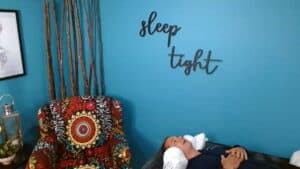
Then I started sticking pillows under my neck. I found that if I got it just right and my head was about a quarter of an inch off the bed, that’s where the magic was. I started designing what we now call the “neck nest.” You can do this with a regular pillow, but it’s a little more difficult. But what you do is you take a pillow and put it under your neck, but the weight of your head needs to be just off of the bend, and then that head basically hangs on in space, creating this light-distracted force.
Distraction is a stress that causes change. So you’ll gently stretch the curve back into your neck, even if you just stay in that position for an hour. And then you go to your side, but you want to put the body into some sort of corrective position for at least an hour a night.
That looks really cool. Awesome. So, if somebody just gets the pillow and doesn’t use your monthly membership site, can they still get the benefit?
Yeah, they can. On necknest.com, they can purchase the pillow, and there are a bunch of videos. If you get a neck nest, understand you can’t buy a more comfortable pillow. You have to buy a functional pillow, and then function becomes comfort. Once you start using a neck nest, I recommend using it for an hour a night or half an hour a night and start getting used to it. As your body gets used to the position, you’ll see your sleep transform. It’s not easy; I’m definitely not going to lie to you.
We’ve helped thousands of people do it, but it takes work. So you focus on just falling asleep in the position. The site explains to you how to angle the pillow, how to get it just right, and to ask where in another process. With the neck nest, we’re using a different fill. We’re going to have two fill options. That’s going to be 2.0.
Because the more comfortable you are with getting and staying uncomfortable, the more you’ll get out of your life.
That’s the problem. What the conscious brain thinks is comfortable is actually safe for the subconscious brain. The subconscious brain’s safety tells the conscious brain it’s comfortable, but it’s not because the body is like, “What the heck are you doing? There’s no way I can fall asleep like this or stay asleep in that position.”
People toss and turn because their bodies are out of alignment when they sleep, which is the number one reason.
The number one reason people toss and turn is that their bodies are out of alignment when they sleep, causing the average person to toss and turn 20 to 40 times a night. That is why we’re trying to change the dialogue on sleep. We’re not trying to buy a more comfortable bed or pillow. We’re trying to create functional things, and then comfort comes later.
The comfort and discomfort reminded me of Dr. Andrew Huberman’s conversation with David Goggins, who wrote Can’t Hurt Me, a huge best-selling book. They also talked about the anterior mid-cingulate cortex. Well, Dr. Huberman was sharing with David Goggins this region of the brain and how you get uncomfortable and work on something challenging or get out of your comfort zone by at least 10%, but not like hugely where you’re putting yourself into massive stress. Still, it’s definitely outside your comfort zone, and you get all these health benefits from it. Are you familiar with what I’m talking about?
I’m unfamiliar with that portion of the brain, but the hormesis is the body’s ability to change. You don’t get fit when you’re exercising; you get fit from the delta that exercise causes, and your body adapts afterward. In order to create change within the body, you need to move outside of your comfort zone. Because that pain over a period of days causes adaptation, it’s the same thing as shoveling snow. You shovel snow one day, and you’re fine, but you shovel snow two days later, and your back goes out on you. Is it because you shoveled snow wrong, or is it the adaptation to shoveling it the first time in the season that your spine swelled? Then it increased your predisposition to shovel snow and your back going out on you the next time. There’s always that delayed onset of adaptation before the body gets strong.
It’s pretty fascinating. Okay, so one area that would be interesting to discuss is the counterintuitive biohacks and habits that you recommend.
One big thing is understanding that our body’s within a circadian rhythm. Our bodies are tied into rhythms as the sun rises and the sun sets. One thing that’s also tied to that is our body’s core temperature. As our core temperature drops, it allows our body to release melatonin. What is a way to biohack a drop in your core temperature? Well, you can. Some people can take a hot shower or steam before bed or sauna. Then, when they get out, that cooling can stimulate melatonin release and make you tired.

Some people who run hot will actually take a cold shower and then allow that body’s temperature to drop from cooling to stimulate melatonin release. A really cool way to make yourself tired so that you fall asleep in a relaxed state is to take a hot or cold shower and see which one works for you. I really love looking at addressing your body temperature in a unique way to stimulate somberness.
What about taking a melatonin supplement?
I like the magnesium, zinc, L-arginines, and GABA, which calm the brain and create a relaxed environment, allowing the body to naturally release melatonin. However, I don’t like superseding the body’s natural mechanisms unless you travel and change time zones. In that case, you need to force yourself to sleep, so take melatonin.
Do you do something different during the time of year when the days are longer versus when they’re shorter, such as the winter?
I don’t. It’s just changing my bedtime. I’ll go to bed an extra half an hour later and then allow myself to do that. That’s all.
Do you go to bed later in the summer or in the winter?
I go to bed later when it’s the summer. You want to be able to go to bed as close to sundown as possible. Obviously, it won’t happen during the wintertime, but you can get a lot closer to that during the summertime. That’s why people are healthier because they’re more in line with the circadian rhythm.
Towards the beginning of this conversation, you said that you try to keep the lights low after 7 PM. Do you actually use candlelight, or do you use red light, or what do you do?
We use candlelight—a few lights. We have dimmer switches on most of our lights. I like to try to use the incandescent, the more old school bulbs, which are hard to find, versus LED light. But wherever we have an incandescent light, that light’s on, the other ones are off.
Cool. What is the next step for our listeners to take to see if they can improve their sleep by using some of your approaches and systems?
The next step is to go to Instagram and follow us. There’s a lot of free content on Instagram. Rsleepright, that’s my handle on Instagram. See if that content resonates with you. You can also go to drsleepright.com. You can typically take a survey there that requires you to take a quiz. It’s a sleep risk assessment; it scores you and then gives you a sleep score, seeing how your sleep habits are affecting your daily health. You can just scroll through all the free information. If you want to join the membership and are ready for that, you can always put your name on the list and join one of our free 4-day sleep challenges we launch quarterly.
Awesome. Well, those are some great next steps. Thank you so much, Peter. Thank you, listener, for wanting to improve your health and for listening to this show. We’ll catch up with you on the next episode. I’m your host, Stephan Spencer, signing off.
